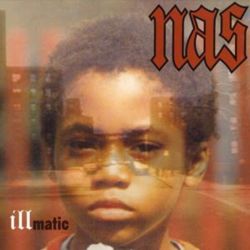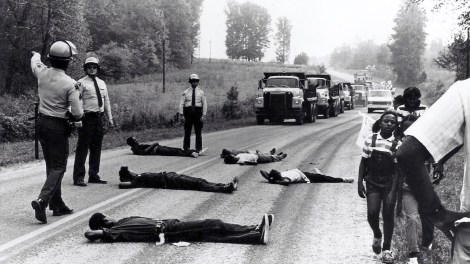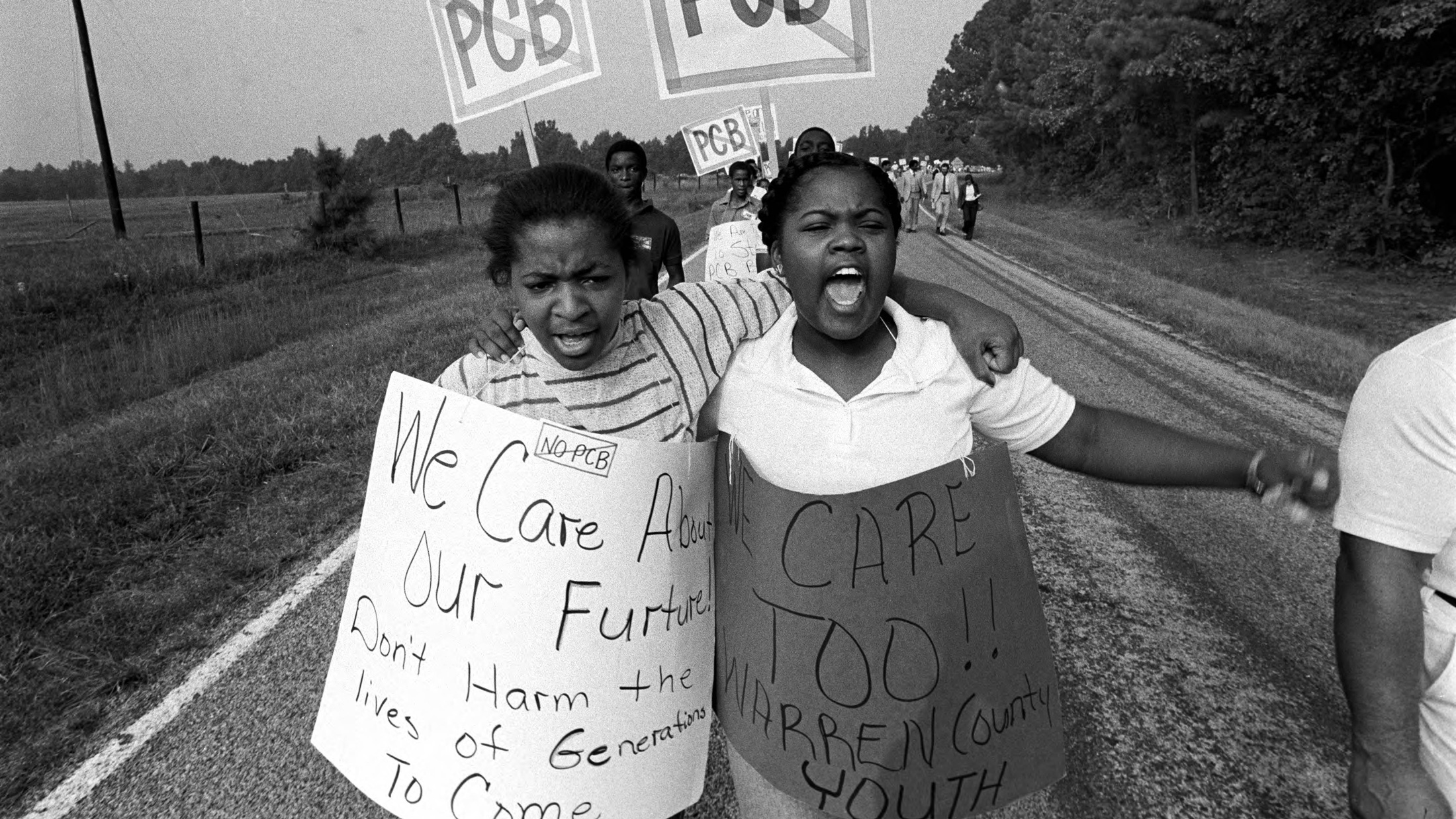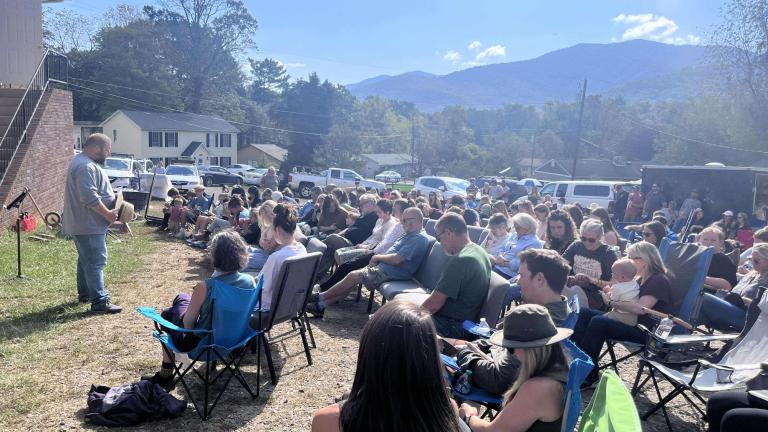I woke up early on my born day; I’m 20, it’s a blessing
The essence of adolescence leaves my body, now I’m fresh and
My physical frame is celebrated cause I made it
One quarter through life, some Godly-like thing created
— Nas, in “Life’s a Bitch,” 1994
 If you’re a hip hop head, there’s no way you can talk about 1994 without bringing up Nas’s magnum opus, Illmatic. There’s perhaps no album that better illustrates America’s decaying urban recesses (although I hear Pete Seeger was brilliant on this note as well) and the thoughts of a young, black man trying to make sense of his smoke-and-smog-filled environment. Fortunately, in 1994 there was an army of foot soldiers committed to demanding that government officials do something about these decomposing hoods.
If you’re a hip hop head, there’s no way you can talk about 1994 without bringing up Nas’s magnum opus, Illmatic. There’s perhaps no album that better illustrates America’s decaying urban recesses (although I hear Pete Seeger was brilliant on this note as well) and the thoughts of a young, black man trying to make sense of his smoke-and-smog-filled environment. Fortunately, in 1994 there was an army of foot soldiers committed to demanding that government officials do something about these decomposing hoods.
That army was the environmental justice movement, and next week its members celebrate the 20th anniversary of President Bill Clinton signing their magnum opus: Executive Order 12898, which requires all federal agencies to consider impacts on people of color in their regulations and rulemaking. That resolution was the result of a groundswell of Native American, Latino, Asian American, and African American public health advocates and grassroots organizers around the country who were, as their often sung battle cry went, “sick and tired of being sick and tired.”
People of color were dying because government officials were allowing companies to dump waste and burn off toxic fumes in close proximity to segregated, poor, black and brown communities — sometimes within blocks. This industrial blight contributed heavily to what made these neighborhoods “slums,” meaning that they were too unhealthy to live in with any measure of dignity. But a new urban environmental movement, which had been bubbling since the 1970s, took on the mission of proving that the polluting factories and plants were zoned so close to communities of color not by coincidence, but as an act of racial discrimination.
It was a continuation of where Dr. Martin Luther King was headed before his death, working on behalf of low-wage, poorly protected garbage workers in Memphis — and the outgrowth of several decades of activism. In a string of policy victories, we had the Civil Rights Act (1964), the Voting Rights Act (1965) and the Fair Housing Act (1968); and then we had the National Environmental Protection Act (1969), establishment of EPA (1970) and the Clean Air and Clean Water Acts (1970, ‘72). But despite all those protections, young black teens and Latinos were still growing up in Illmatic conditions, daily living close to death.
It’s not like the federal government was oblivious to these problems. The battles waged by Ralph Abascal, Cesar Chavez, and Dolores Huerta to protect migrant farm workers from the late 1960s convinced the government to ban several cancer-causing pesticides. In 1971, President Richard Nixon’s Council on Environmental Quality’s second annual report acknowledged racial discrimination adversely affects urban poor and their quality of life. But the injustice lived on.
For a great historical narrative of how government forces allowed urban communities of color to become centers for concentrated pollution, I strongly recommend Julie Sze’s 2007 book, Noxious New York, which describes the toxic environment that made the environmental justice movement necessary. But it wasn’t just New York, and it wasn’t just urban.
In 1982, a group of black residents of the mostly rural Warren County, N.C., literally laid down their lives to stop the placement of a carcinogen-tainted landfill near where they lived and farmed. This was when and where civil rights activist Dr. Benjamin Chavis helped coined the term “environmental racism,” and began to emerge as a leader of this new burgeoning movement.

Jenny Labalme / Duke University
The next year, the U.S. General Accounting Office published a report on the “Siting of Hazardous Landfills and Their Correlation with Racial and Economic Status of Surrounding Communities,” where it found that three out of four hazardous waste facilities in EPA’s Southeast region were located in black communities. There are dozens more cases and reports to cite — “Toxic Waste and Race in the United States” of course — but the evidence was unavoidable: The government was allowing communities of color to act as sacrifice zones in the nation’s quest for economic growth.
By 1991, EJ activists such as Robert Bullard, Beverly Wright, Dr. Mildred McClain, Vernice Miller-Travis, Luke Cole, Damu Smith, and scores of others pushed President George H. W. Bush to create an Office of Environmental Equity to examine some of these disparities. This didn’t go far enough to address the health needs of black and brown communities, however, so EJ soldiers stormed the U.S. Capitol, protesting and singing on the front steps, “We’re sick and tired of being sick and tired.”
Finally, President Clinton issued Executive Order 12898, regarding “Federal Actions to Address Environmental Justice in Minority Populations and Low-Income Populations.”
As Mildred McClain explained during a panel last year, “It is because [of] our battle cry that President Clinton issued the executive order. … But [we were] in Virginia hashing it out before it even got signed, because we knew we had a job to do for the children, the elders, the vulnerable populations, and those who were sitting up in hospitals with asthma, and no health insurance to pay for the doctor.”
The year was 1994, and Nas was hashing it out in New York, singing, “Life’s a bitch and then you die,” because for too many African Americans and Puerto Ricans in the East, this was the reality, just as it was with Chicanos and Mexican farmworkers in the West, to say nothing of Native Americans all across the country. You lived next to an oil refinery, a landfill, an incinerator, a chemical facility, a farm overrun with pesticides — zoned and redlined to live and work in these places as policy — and then you died.
The environmental justice movement was filled with people who valued human life and knew that it didn’t have to be this way in their communities. This month marks 20 years since they made the federal government come to that same conclusion. Time is Illmatic.
Throughout 2014, I’ll be talking with people who helped turn the environmental justice movement into official federal policy. This series will coincide with EPA’s celebration of the environmental justice movement’s 20th anniversary, starting next week.



